This week in Linux, there’s a new AI chatbot called DeepSeek making waves and terrifying tech investors. Google has open sourced PebbleOS, the operating system for the old Pebble Watches. The Thunderbird email team announced a new version and a new release strategy. Then we’ll take a look at a brand new desktop environment for Linux users. All of this and more on This Week in Linux, the weekly news show that keeps you up to date with what’s going on in the Linux and Open Source world. Now let’s jump right into Your Source for Linux GNews!
Sponsored by Sandfly Security, the revolutionary agentless platform designed for Linux. Visit https://thisweekinlinux.com/sandfly to experience security that’s not just effective but gives you peace of mind. No agents. No downtime. Just cutting-edge protection.
Support the Show
Become a Patron = tuxdigital.com/membership
Store = tuxdigital.com/store
Chapters:
00:00 Intro
00:37 DeepSeek AI Chatbot scares Silicon Valley
05:13 Google Open-Sources PebbleOS, Pebble’s Founder Plans a Revival
09:39 Thunderbird 134 & Release Strategy Changes
13:29 Sandfly Security, agentless security [ad]
15:00 Steam Brick Mod… “because!”
17:41 Hyprland 0.47 Released
20:56 Orbitiny Desktop Environment
26:09 Discord Screen-Sharing with Audio on Linux Wayland is finally here, sort of
28:29 Support the show
Links:
- DeepSeek AI Chatbot scares Silicon Valley
- https://www.deepseek.com/
- https://www.cnet.com/tech/services-and-software/DeepSeek-turned-the-ai-world-on-its-head-but-dont-fall-for-the-hype-just-yet/
- https://api-docs.deepseek.com/news/news250120
- https://www.cnet.com/tech/services-and-software/DeepSeek-tops-iphone-downloads-what-to-know-about-the-ai-assistant/
- https://markets.businessinsider.com/news/stocks/nvidia-tech-stocks-DeepSeek-ai-race-nasdaq-2025-1
- https://techcrunch.com/2025/01/27/DeepSeek-claims-its-reasoning-model-beats-openais-o1-on-certain-benchmarks/
- https://openai.com/index/new-embedding-models-and-api-updates/
- https://www.realclearpolitics.com/video/2025/01/27/scale_ai_founder_alexandr_wang_DeepSeek_has_about_50000_of_the_most_powerful_nvidia_chips_that_they_cant_talk_about.html
- https://destinationlinux.net
- Google Open-Sources PebbleOS, Pebble’s Founder Plans a Revival
- Thunderbird 134 & Release Strategy Changes
- Sandfly Security, agentless security [ad]
- Steam Brick Mod… “because!”
- Hyprland 0.47 Released
- Orbitiny Desktop Environment
- Discord Screen-Sharing with Audio on Linux Wayland is finally here, sort of
- https://www.gamingonlinux.com/2024/12/looks-like-Discord-finally-fixed-linux-screen-and-audio-sharing-with-wayland/
- https://www.gamingonlinux.com/2025/01/Discord-canary-on-linux-breaks-wayland-screen-sharing-support-for-now/
- https://www.gamingonlinux.com/2025/01/Discord-screen-sharing-with-audio-on-linux-wayland-is-officially-here/
- https://tuxdigital.com/Discord
- https://tuxdigital.com/forum
- Support the show
Transcript
View full transcript
Michael:
[0:00] This week in Linux, there’s a new AI chatbot called DeepSeek, making waves and terrifying tech investors. Google has open-sourced Pebble OS, the operating system for the old Pebble watches. The Thunderbird email team announced a new version and a new release strategy. Then we’ll take a look at a brand new desktop environment for Linux users. All of this and more on This Week in Linux, the weekly news show that keeps you up to date with what’s going on in the Linux and Open Source world. Now let’s jump right into Your Source for Linux GNews.
Michael:
[0:37] This episode of TWIL is sponsored by Sandfly Security. More on them later. The AI industry is in a bit of a scatter right now as the new kid on the block, DeepSeek, is shaking things up a bit.
Michael:
[0:49] So why is DeepSeek making waves? Well, there are claims to outperform OpenAI, Google, and Meta at a fraction of the cost. There are claims that the DeepSeek V3 is trained under $6 million worth of computing power with NVIDIA H800 chips. And the DeepSeek AI assistant has already overtaken ChatGPT as the top rated free app on Apple’s US App Store. Now, this raises questions about the billions of AI investments by the US tech companies. And also, to top that off, the DeepSeek R1 model is Open Source, unlike OpenAI’s o1 and Google’s Gemini. You would imagine that OpenAI would be Open Source because it has the word open in their name, but they’re not because they’re jerks. They used to be open when they originally created it. Yeah also what’s really cool about the DeepSeek r1 is that it allows users to see its reasoning process unlike the competitors where it just gives you the answer it actually goes through the process and shows you like how it got to that answer which is awesome actually and i feel like every chat bot should do that because that would be great.
Michael:
[2:10] Now, there were some issues with stockholders. Big tech stocks lost quite a bit of money, including NVIDIA. So they did not have a good day when the DeepSeek hit the streets.
Michael:
[2:21] NVIDIA stocks plummeted 18%, losing a record of almost $600 billion. Not actually $600, but almost $600 billion, which is just not a good day for NVIDIA. So how does this AI chatbot stack up against the competition? Well, previous AI models from China disappointed compared to U.S. Models, but DeepSeek V3 and DeepSeek R1 are now being praised by Silicon Valley executives and engineers. And also, the affordability aspects of it are really cool, too. So Mel Morris, the CEO of Corpora or Corpora AI, says that this affordability opens the door for smaller companies and startups to leverage advanced AI technology that was previously inaccessible, which is thanks to the Open Source aspect of it, which is fantastic. DeepSeek R1 is supposedly 20 to 50 times cheaper than OpenAI’s o1 model, depending on the task in terms of performance and efficiency and all that sort of stuff. They claim it to be very much more efficient than other models. And OpenAI responded by cutting prices for its o3 mini models. Now, there is a little bit of controversy and skepticism.
Michael:
[3:38] ScaleAI CEO Alexander Wang claims that DeepSeek has 50,000 NVIDIA H100 chips violating the U.S. Export controls, but there’s no evidence provided for that claim. So we’re just going to have to say, you know, there’s skepticism there.
Michael:
[3:54] Also, analysts suspect that the actual training costs were much higher than they were stated as being $5.5 million or $5.55 million. So there are some reports saying that it’s $10 million, others claiming that it’s upwards of $100 million, and at this point, we have no way to know. Other claims are saying that it’s kind of nonsense anyway, regardless of how you look at it, because whatever money was spent directly isn’t exactly what is being used to make it because it was trained on other stuff, and the money that was put into those would indirect cost related to the DeepSeek stuff. So if you count all the money that was involved, it’s much more, as people are saying.
Michael:
[4:36] So that’s depending on how you look at it and how it’s built. The amount of money put into it is, you know, there’s some skepticism. DeepSeek has not responded to any of the allegations or to skepticism as of yet. So we’ll see in the future what the details come out. There is so much to this story and the information is constantly changing. So we’ll probably revisit this topic in the future. But if you want to learn more, you can check the links in the show notes. And also check out the next episode of Destination Linux, episode 405, which comes out this coming Monday, because we’re going to do a big deep dive into DeepSeek on the podcast.
Michael:
[5:13] Google is one of those companies that when they’re in the news, it could be either something really great or something terrible. Thankfully, this time, it’s one of the positive things. So Pebble founder Eric Migicovsky, I might have said that wrong. Sorry if I did. Asked Google to release the source code, and they did. surprisingly. Google has now Open Source Pebble OS, minus some proprietary components. This allows developers to build their own smartwatches using the Pebble OS code, which is just very, very cool. For those that are not familiar with Pebble, this is actually kind of like the pioneer of the smartwatch industry, because back in 2012, they did a Kickstarter to launch the Pebble smartwatch, and it had features like an always-on e-ink display.
Michael:
[5:57] Weeks-long battery life, basic health tracking, a button based UI with a pixel art design. You can also have like it had an open app ecosystem where people can make their own games and watch faces and apps and all that sort of stuff. And it was very popular because it sold over two million units, but also they somehow ran out of money in 2016. So Pebble went from 2012 to 2016, and then it basically just ran out of money and all the assets were purchased by Fitbit. Now, some people are in this news cycle related to this topic coming out. Some people have said that Fitbit acquired Pebble and then closed it, but actually Pebble essentially just ran out of money and it was going to be gone anyway. So they bought the assets of Pebble. And so technically that’s what happened. And then.
Michael:
[6:50] Google later acquired Fitbit and then do what people thought that Fitbit did to Pebble because they shut down Fitbit and integrated all their stuff into like the Pixel watches and that sort of thing. So that happened. And now that’s why Google has ownership of Pebble OS. So Migicovsky has launched a new company to bring the Pebble back. He goes on to say that it’s time to take matters into my own hands. A small team and I are working on a new Pebble-like smartwatch that runs open-source Pebble OS, has the same beloved features, plus some new fun stuff, and also stays true to the core Pebble vision. It’s gonna be having the open-source Pebble OS. It’s gonna maintain the classic Pebble features with new upgrades, and also be compatible with existing Pebble apps and watch faces, which is very cool. And for those who are wondering, you know, existing Pebble apps, those are really old. So it’s interesting that there’s been like an Open Source, an effort to keep Pebble watches active. There’s the rebel community where they have their, like they’re building their own stuff and kind of like home brewing it in a way. So they’re keeping it alive, which is very cool, which makes this even more possible because those apps are actually more maintained than you would expect them to be.
Michael:
[8:03] But they, he says that there’s no name yet for the company or what the new watch is going to be called. But he does promise that if you had a Pebble and loved it, this is the smartwatch for you. Now, for those who are curious, I do have a suggestion for what he can call it. And if you are open to ideas, Mr. Migicovsky, instead of Pebble, you could call it Gravel, the Gravel Watch.
Michael:
[8:27] I mean, just a thought, probably not the best option, but it’s somewhat related. And anyway, there are some challenges and some stuff that they have to do in order to get this new watch out. And because Google removed proprietary components like the Bluetooth stack and the heart rate sensor drivers and that sort of stuff. So those would have to be, you know, create new Open Source replacements for those. And also making a smartwatch hardware in 2025 is easier than in 2011. But there’s also still things you have to do to update all of the software to be related to that new hardware. Now, this new Pebble-like watch has a long ladder to climb because since the smartwatches have become much more powerful and useful over the years. But if anyone can bring something new to the table, I think the people here who pioneered it in the first place certainly have what it takes. But we’ll have to wait and see. I think it’s really interesting. I’m looking forward to having a Pebble again. I only dabbled in it. I didn’t actually buy one, but I did play with one and tried it right before the company went under. So that’s why I didn’t get one. But so I have a lot of anticipation for this because they’d be very cool to see it come back.
Michael:
[9:39] We’ve got some exciting news for Thunderbird users and well, anyone who wants a desktop email client for Linux. Let’s start things off with the latest release, Thunderbird 134.
Michael:
[9:49] The biggest thing happening in this release is the real-time desktop notifications, a new system for instant alerts. This is a very big deal. It might not seem like it, but it is a very anticipated feature for a lot of people, and a lot of people have requested it. There is a third-party tool called BirdTray, but I’m not sure how active it is or if it’s active at all, and having it built in is, of course, the best way to do it. They also have some performance and stability enhancements. They’ve made some fixes, like some security fixes, as well as fixes for POP3 and other miscellaneous bug fixes. They’ve also made some tweaks for the user experience. So the dark mode, for example, has much better looking in-app notifications and many more. Now, that doesn’t seem like a lot of stuff necessarily for a new release, I know. But that’s not really what I’m most excited about for this week anyway, because Thunderbird announced something else this week that is a big deal. And that is that Thunderbird is going to be moving the monthly release builds as default.
Michael:
[10:52] So starting with Thunderbird 135 in March 2025, the monthly release channel will become the default download. Currently, Thunderbird defaults to the ESR or the extended support release, which gets one major update per year plus smaller security fixes. So why the change? Well, first, more updates, more features, that’s always great. So they’re saying that you’re going to get new features and bug fixes faster, which is, of course, great. But they’re also saying because adoption is low for the release channels or the release builds, they’re saying that only 0.27% of users are currently using these builds.
Michael:
[11:30] And Thunderbird aims to boost that to 20% of new installs. They also say it’s a smoother update experience compared to the major ESR jumps, because going from update to update from like 134 to 135 would be much less change between that versus the ESR to ESR. So what happens to the ESR version? Well, nothing really. It’s going to remain supported, updated, and available. Existing ESR users won’t be forced to switch, but they will get an in-app notification encouraging them to try out the monthly builds if they want to. But the bottom line is that Thunderbird isn’t changing how it’s developed, just which version is prioritized. More users will get faster updates and newer features by defaulting the release builds instead of the ESR builds. I am very happy to see this change, and I think it’s the best path forward because up until now, I didn’t know they actually considered the release channel as a stable release since they prioritized the ESR. And every time I’ve talked to people who work on the development of Thunderbird, they would mention how, you know, the next big features are going to come in like a year or so, which always bummed me out. And so I hope this means that we’ll finally get real threaded conversations in Thunderbird sooner rather than later. And to anyone wanting to comment to say that threads exist in Thunderbird already, threads and threaded conversations are different things.
Michael:
[12:47] Thunderbird has one, but not the other. And the other has been the best thing, one of the best things about Gmail for 20 years. So it’s one of the things that I like to talk about every time I mention Thunderbird because it is a feature that should be there and hopefully it will be soon. And also it makes sense. I just want to real quick note that the 0.27% of users not using the latest builds, I think that most of them don’t even know that that’s a possibility and that the release builds are separate from the ESR and they just assume that the ESR is the only option to have a stable release. So because that percentage is so low, that has to be why.
Michael:
[13:23] So I think that this is a fantastic decision and a really good move for the future of Thunderbird. As Linux users, we know what’s up. Security is non-negotiable, but with threats getting smarter, your security tools need to keep pace with it without dragging your system down.
Michael:
[13:39] Traditional agents, well, they just slow you down and leave blind spots. It’s time for a smarter approach. And that’s why This Week in Linux is proud to be sponsored by Sanfly Security, the revolutionary agentless platform designed for Linux. Sanfly doesn’t just detect and respond, it revolutionizes security with SSH key tracking, password auditing, and drift detection, covering threats from every angle. Whether your systems are in the cloud, on-premises, or in embedded devices, Sandfly ensures they’re all secure without the headaches of agent-based solutions. Listen to what Ken Kleiner says, the senior security engineer at the University of Massachusetts. He says that Sandfly is the first product I’ve seen that accurately and quickly detects thousands of signs of compromise on the Linux platform. Its unique method automates tasks, which would be manually impossible. Automation is key with detection and Sandfly completely fits this and other requirements. If your organization is using Linux, this should be part of your cybersecurity toolset. So experience security that’s not just effective, but gives you peace of mind. No agents, no downtime, just cutting edge protection. Dive into the future of Linux security at thisweekinlinux.com/sandfly. That’s thisweekinlinux.com/sandfly. And see how Sandfly can transform your security strategy.
Michael:
[14:57] That’s thisweekinlinux.com/sandfly. There’s a very wise saying that holds true most of the time. Just because you can, doesn’t mean you should.
Michael:
[15:05] However, on occasions, there are times where people go against this and the result is dope. Let’s talk about the new Steam Deck mod called the Steam Brick. A modder going by the name Crastinator Pro, great name by the way, converted a Steam Deck into a Steam Brick, a screenless console-like device. He says that you can brick your Steam Deck one way or another. No screen, no controller, and absolutely no sense. Just a power button and a USB port. So why would this person do this? What is the reason? Well, they say the Steam Deck didn’t fit in their backpack. Sure, they could get a bigger backpack, but where’s the fun in that?
Michael:
[15:47] So they actually said and admitted this and says that I was so preoccupied with whether or not I could, I didn’t stop to think if I should. So how did this happen? How does it work? Well, they took the OLED Steam Deck, it was disassembled and placed into a compact heat-resistant case made of Overture Polycarbonate Pro or PC. They use it mainly plugged into a TV or AR glasses, and they also say that this project was not approved or endorsed anyway by Valve and is generally a very bad idea. So do it if you want to. It’s at your risk. So they say that the hardware modding like this is very risky. A small mistake can brick the device permanently so if you want to do it you can there is a list of how to do it and everything.
Michael:
[16:38] They basically said that you know because valve’s steam deck is repairable there’s also like the iFixit guides that exist so they use the iFixit guides to do the teardown and do the reassembly and all that sort of stuff so if you wanted to do it you could but think about it first so really this this mod sparks a big discussion about valve revisiting the steam deck or the steam machine concept i think it’s very cool steam machines they failed originally but today’s proton compatibility and steam os improvements could make a very very cool steam machine so i would love to see a new steam machine being made or make maybe my own Steam Brick but unlike this modder. I don’t think I should.
Michael:
[17:24] So I also don’t have enough modding experience or the equipment to do it in the first place. So I guess I’m saying that I can’t actually. So it’s not about if I if I can, whether I should, I can’t. But if I could, would I?
Michael:
[17:39] Maybe maybe i would this week we saw a new version of Hyprland the dynamic tiling whalen compositor with the latest release of Hyprland 0.47 and they introduced some pretty cool and exciting enhancements so first of all what they did was basically a major overhaul and a bunch of fixes so they did some internal rewrites focused on memory safety the renderer and animation system they’ve also done a lot of stability improvements while keeping performance similar, which is very cool. But I’d say probably the biggest highlight of this release is the experimental HDR and color management support. This implements the xx-color-management-v4 and the frog-color-management-v1 Wayland protocols and becomes among one of like the few compositors that actually support HDR, which is very cool. They also have added squircles, which is basically like rounded corners and cosmetic update for the way that the windows are laid out. So if you want to have a more rounded but also kind of squarish, that’s where the squircles come in.
Michael:
[18:48] There’s also some new protocols that are a part of it with the Hyprland Surface, which is used in the Quickshell and Hyprland Lock Notify that prevents desktop flash when waking from suspend. KDE introduced a donation request notification system last year, which pops up once a year and in last year when they introduced it, it proved to be very successful as donations increased dramatically. And when it happened, I covered it on the show and I said that other projects should consider doing something similar.
Michael:
[19:16] Hyprland took notice and implemented one of their own so every year there’s gonna be two pop-ups one in july and one december that asks you to do a donation now you can also dismiss this and it’s only going to pop up one time per sequence so there’s just one time in july and one time in december and if you want to you can also disable it completely so i think this is actually a very cool way to do it because you’re letting people know that you you would do want donations because a lot of people don’t think about it. It’s similar to how a YouTube video is or a podcast episode where someone is subscribing it to it, but they haven’t rated it. Or someone who is watching a video, but they’ve not subscribed or they’ve not liked the video or commented or anything. They just don’t think about it. Or maybe even becoming a patron of This Week in Linux.
Michael:
[20:05] They don’t think about it because without someone mentioning it and reminding them, it’s out of side out of mind sort of thing. So I think this is a good idea to add it to Hyprland. And I think other projects should consider it as well. They’ve also done some configuration updates. So they’ve added a feature for negative, which adds a negation for regex if you want to. And they’ve also have a new window selector tag for matching windows and many more, as well as some additional fixes and tweaks and bug fixes and all that sort of stuff. So I think this is a welcomed new release for Hyprland users. And the work on HDR support is very exciting. And I also really like they fact that they added the donations thing. So let me know what you think. If you are a Hyprland user, let me know what you think about the latest update. If you’re not a Hyprland user and you’re interested in it, let me know if what your experience is when you first try it out.
Michael:
[20:53] And also let me know in the comments, what do you think about the whole donations thing? There’s a new desktop environment for Linux users called Orbitiny. Orbitiny?
Michael:
[21:02] I’m not sure exactly how it’s pronounced, but I think Orbitiny sounds more likely than Orbi-tiny. So let’s go with that.
Michael:
[21:11] Now, there’s a lot to cover on this topic, so we’re not gonna be able to cover everything. We just don’t have time for that or as in depth as I was like it to be. So be sure to subscribe to my YouTube channel because I do plan to give it a spin and make a video about my experience with it so we can take a deeper look on that. So be sure to subscribe. Orbitiny is a new Linux desktop environment built with Qt or Qt and C++, focusing on innovation and familiarity, as they say. Now, we’ll get to the innovation stuff. There’s some really cool stuff. We’re gonna talk about that in a second, but this is not based on any existing DE and it’s designed to be modular. So components function independently and it’s portable. So you can run it from a single directory on any distro or live CD and all the settings are saved in a single folder. It’s very cool. And of course, this is a Linux desktop environment. So it’s an Open Source project. The source code is available on Codeberg and it is released under the MIT license. So let’s talk about some key features and components. There’s an innovative file manager with built-in search, content search inside of files, multi-folder paste support, which is basically you can do a lot of cool stuff with like moving files, putting text into other files.
Michael:
[22:25] There’s just very cool. The desktop panel has 18 plugins with drag and drop support, dedicated search utility, so integrated with the file manager and available as a standalone tool. They’ve also have a clipboard manager which is built in by default which is every desktop environment should have a clipboard manager and every user should enjoy the value of a desktop.
Michael:
[22:47] Clipboard manager because it’s so cool to be able to like you know everybody has a clipboard obviously it’s built in but a clipboard manager i should make a video on this because it’s so cool a clipboard manager allows you to have a history of the things that you’ve copied to your clipboard rather than having one thing and then the next time you copy it a first thing it’s completely gone and it just vanishes into the ether.
Michael:
[23:08] The clipboard managers are very cool. So I’m happy to see that. They also have an advanced start menu and dashboard. So you have like drag and drop support for the running tasks. And you can see the installed apps and all that sort of stuff. They also have built in support for wine and DOS box. So you can run windows and DOS applications.
Michael:
[23:26] Also, there’s math file support. So it extracts and launches them as HTML files. And what really makes Orbitiny special? Well, it has a portable mode, which you can run from a USB with the settings saved in one place. Like I mentioned before, it also has desktop gestures. So you can draw panic patterns to launch programs. It has this thing called icon emblems. So that has visual indicators for copied, cut or newly added files. It has this very cool idea of like the innovative aspects of how it handles files. They call them file tricks. So you have a, you can basically merge text files together so you can copy a content into or paste content into another file and you can just copy the text paste it and it will automatically append it at the bottom of the file which is very interesting they also have an ability to paste content into multiple folders at the same time so if you copy multiple files and then you select multiple folders and you paste it it will be able to make a copy of each one and all of those folders which is very interesting like there’s a lot of cool ideas. Also, the right-click menus don’t interfere with keyboard shortcuts. They also have advanced panel features, so there’s no edit mode necessarily. It supports multiple commands for various different buttons, and there’s so much that this thing has. But…
Michael:
[24:48] There’s also some stuff it doesn’t have and that is there’s no built-in window manager so it works with xfwm marco or kde’s kwin there’s no session manager yet so it must be started manually after logging into another de as you can see in the visuals there’s basically unit ubuntu with gnome and then you can launch it from the terminal and then you can get access to the uh the Orbitiny desktop. So that’s kind of weird, but they are working on developing support for that. It also lacks power management and screensaver, which is also part of the planned future updates. And it only works on X11, which of course, Wayland is supported in the development aspects. They are working on it, but it’s not available just yet. So still in development, lacks a session manager and a power management system. But I think there’s a lot of potential here because lightweight.
Michael:
[25:44] Customizable, portable, all sound great. And I think Orbitiny offers a fresh take on some different desktop workflows and that sort of stuff with some unique features, which is very rare to see these days. But some of these are very cool ideas. Some of them are a little bit, you know, out there, but I think there’s a lot of potential there. So subscribe to the channel If you want to see more and see my deep dive into our bit.
Michael:
[26:08] And when I do that, Discord users on Linux have been waiting for Discord to support full screen sharing with audio on Linux under Waylon. And finally, finally, we have it.
Michael:
[26:20] Well, sort of. It’s here, but not every configuration has it. We’ll get to that. This effort has a lot of ups and downs. In December of last year, it was announced that Discord’s Canary version received support for this, and then weeks later, it was broken.
Michael:
[26:37] And then fixed. But now, dun-da-da-da, it’s here. Which is very cool, very cool. So, it’s available in the direct downloads for Discord and in the snap package but not available for Flatpak users so it’s not available in the flat hat Flathub version if you use that one there will be some additional fixes and stuff for that to be updated and in the future it is planned but not there yet there are also some other caveats or limitations it only works with applications using PulseAudio. So apps that use PipeWire directly may not work yet. Now, if PipeWire is translating the recalls for PulseAudio, it will work. But if it’s already been updated to use PipeWire, they may not have some support for that yet. It is planned, but again, not yet.
Michael:
[27:28] So why does this matter? Well, making games, gaming collaboration and other tech support easier for Linux users on Wayland is always great. And Discord is a very popular application. And more Linux users can now fully participate in Discord voice chats with screen sharing, which is always great to see. Now, overall, this is very good news. I’m happy to see it happening. I use the Flatpak for Discord, so I don’t have support for it. And I’ll be waiting for more. And for those who are using like the SteamOS or Bazite and Flatpak is like the norm, you’re not going to have the same experience and it will happen. It is happening, which is awesome.
Michael:
[28:08] We’re still going to have to wait a little bit. Now, if you’re looking for a great Discord server, then you might want to check out mine, tuxdigital.com/discord. You can check it out. I’ll have links in the show notes as well, but tuxdigital.com/discord. And you just join the community. We also have a forum too. If you want to go
Michael:
[28:26] to tuxdigital.com/forum, you can join the community that way as well. Thanks for watching this episode of This Week in Linux. If you like what I do here on this show and want to be kept up to date with what’s going on in the Linux and Open Source world, then be sure to subscribe. And of course, remember to like that smash button. If you’d like to support the show or in the TuxDigital Network, then consider becoming a patron by going to tuxdigital.com/membership, where you get a bunch of cool perks like access to the patron-only section of our Discord server and much, much more. You can also support the show by ordering the Linux Everywhere t-shirt or the This Week in Linux shirt at tuxdigital.com/store. Plus, while you’re there, check out all the other cool stuff we have like hats, mugs, hoodies, and more at tuxdigital.com/store. I’ll see you next time for another episode of Your Source for Linux GNews. Thanks again for watching. I’m Michael Tunnell. I hope you’re doing swell. Be sure to ring that notification bell. And until next time, I bid you farewell.
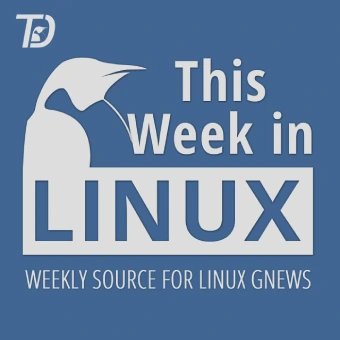

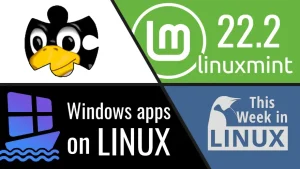
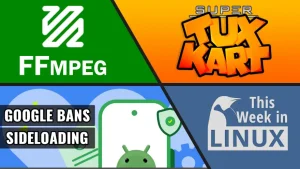
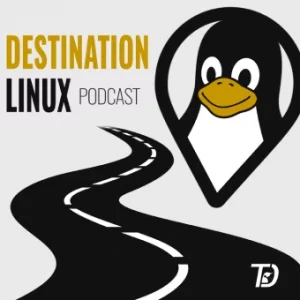
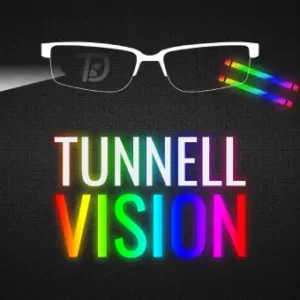
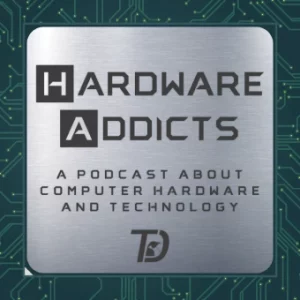
Start the discussion at forum.tuxdigital.com